
by LT Rosemary Abbitt, NOAA Corps
April 13, 2018
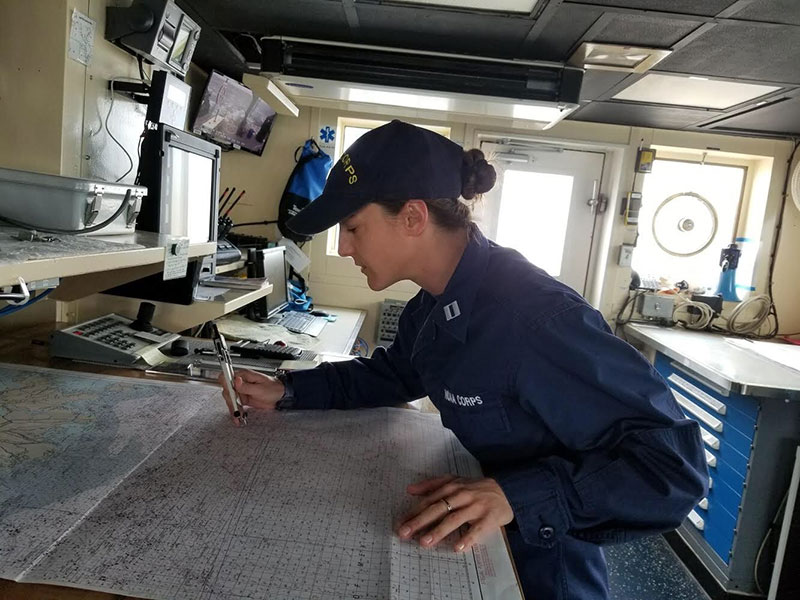
LT Abbitt plotting a fix at the charting table on the bridge of the Okeanos Explorer. Image courtesy of Brianna Pacheco, LTJG (Sel.)/NOAA Corps. Download larger version (jpg, 383 KB).
As Mark Twain once said, “Twenty years from now you will be more disappointed by the things you didn’t do than by the ones you did do. So throw off the bowlines. Sail away from the safe harbor. Catch the trade winds in your sails. Explore. Dream. Discover.” As we departed from Pascagoula, I had butterflies in my stomach. The excitement of discovery is what NOAA Ship Okeanos Explorer is known for and I am thrilled about my new assignment as the Operations Officer aboard this ship, exploring the deep sea on this and future expeditions.
I have been proudly serving in the NOAA Corps, the smallest of the seven U.S. uniformed services, for six years. Last month, I reported to my second sea assignment as the Operations Officer aboard NOAA Ship Okeanos Explorer. My previous land assignment was in the Florida Keys National Marine Sanctuary (FKNMS) in Key West. While leaving the Keys was difficult, the excitement of being assigned to “America’s Ship for Ocean Exploration” made it much easier. As I mentioned, I have been to sea before. Prior to my assignment at FKNMS, I was aboard NOAA Ship Rainier, where I became somewhat of a hydro geek. It’s exciting for me to be aboard another ship that does so much ocean mapping. I am thrilled to add to the foundation of skills I learned aboard Rainier.
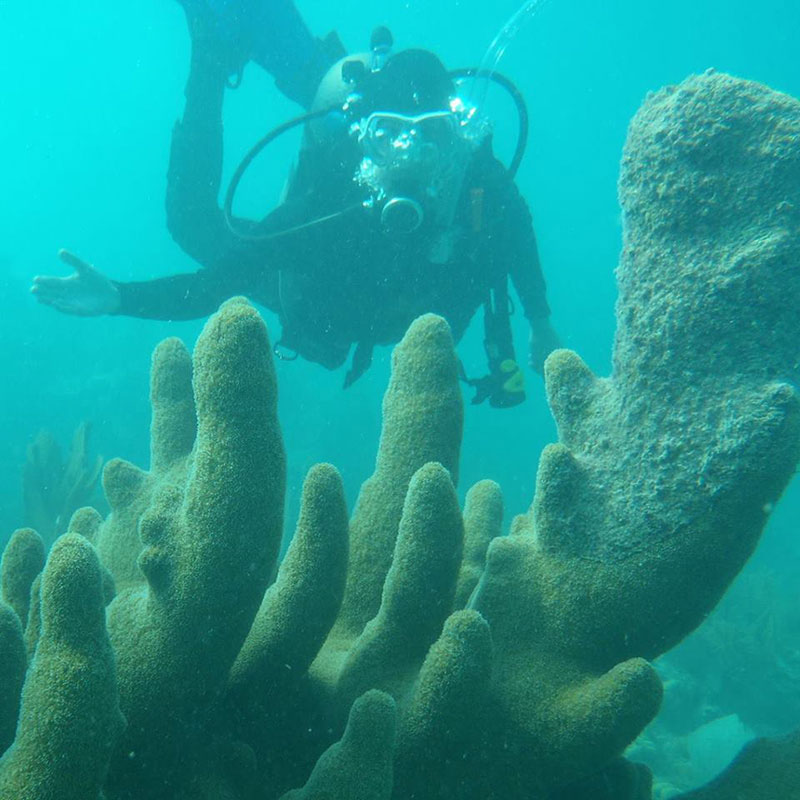
LT Abbitt behind a beautiful crop of Dendrogyra cylindrus (pillar coral) at Sand Key Sanctuary Preservation Area, six miles south of Key West. Image courtesy of Sean Morton, NOAA. Download larger version (jpg, 311 KB).
I have always been passionate about the ocean and all its creatures. I feel like I was born to be in, on, and under the water. During high school, while studying at the Forfar Field Station on Andros Island, Bahamas, I became hooked on marine science and diving. I am especially fascinated by the deep ocean and have always had a love for coral. Being part of the forefront of discovery with my new at-sea assignment is a dream come true!
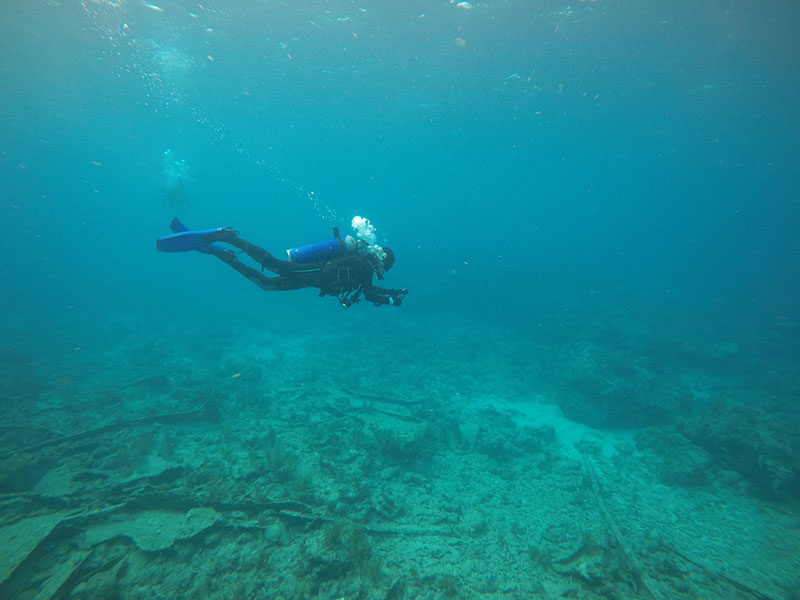
LT Abbitt conducting photogrammetry on the historic shipwreck site, City of Washington, in Key Largo, Florida. Image courtesy of Lonny Anderson, FKNMS/NOAA. Download larger version (jpg, 3.1 MB).
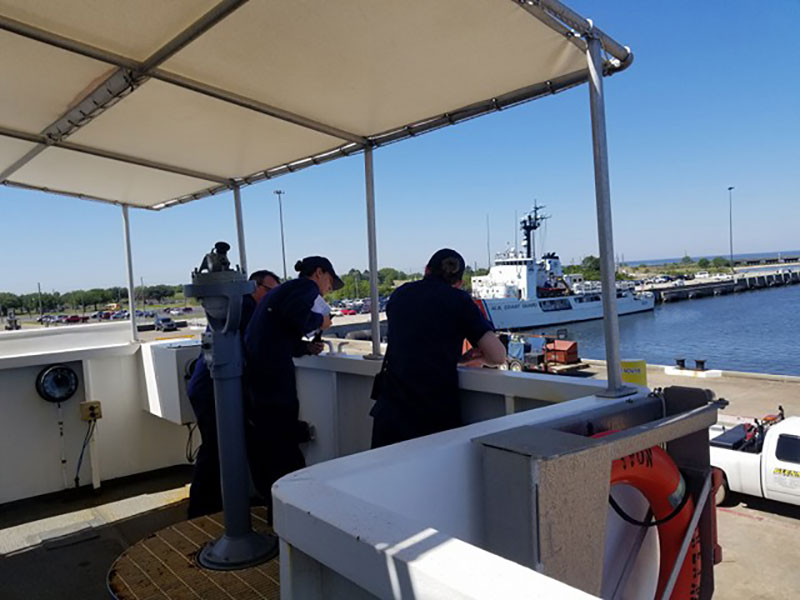
LT Abbitt conning NOAA Ship Okeanos Explorer for outbound transit from Singing River Island, Pascagoula, Mississippi, with her new Commanding Officer and Executive Officer. Image courtesy of Brianna Pacheco, LTJG (Sel.)/NOAA Corps. Download map (jpg, 170 KB).
I love to travel! I am curious by nature and it is a joy to experience different cultures, meet new people, and explore the world. My most recent vacations include sightseeing around Grand Cayman, Germany, Amsterdam, and Spain. I look forward to all the cool places this assignment aboard Okeanos Explorer will take me, such as Bermuda in a few months!
Growing up, I knew I was especially lucky to have such a supportive family. My parents set a great example for me and always encouraged me to work hard, just as they did. With my NOAA Corps career path, I have met some amazing and inspirational people along the way – people who shared their knowledge and have inspired me with their dedication and integrity. All of this has helped me to develop as a great diver, capable mariner, and scientist. I am a work in progress with much to learn and I strive to constantly improve.
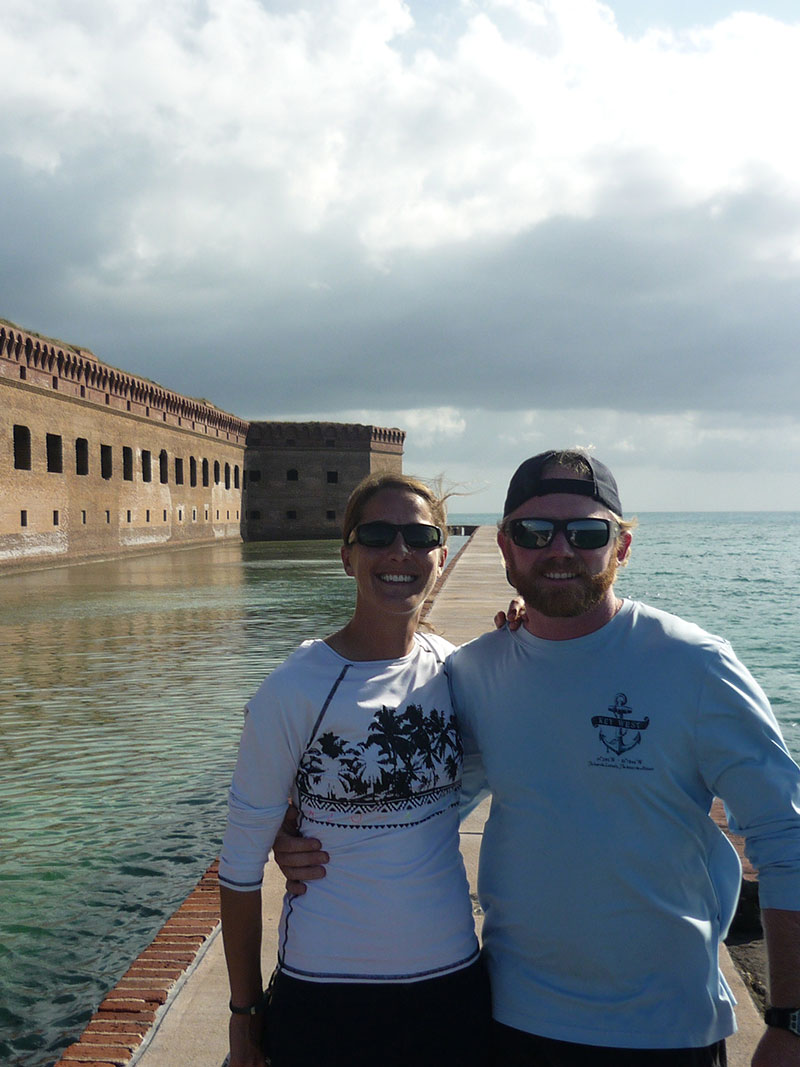
LT Abbitt and her boyfriend, Captain Patrick Vandenabeele, at Fort Jefferson at the Dry Tortugas National Park. Download larger version (jpg, 3.5 MB).
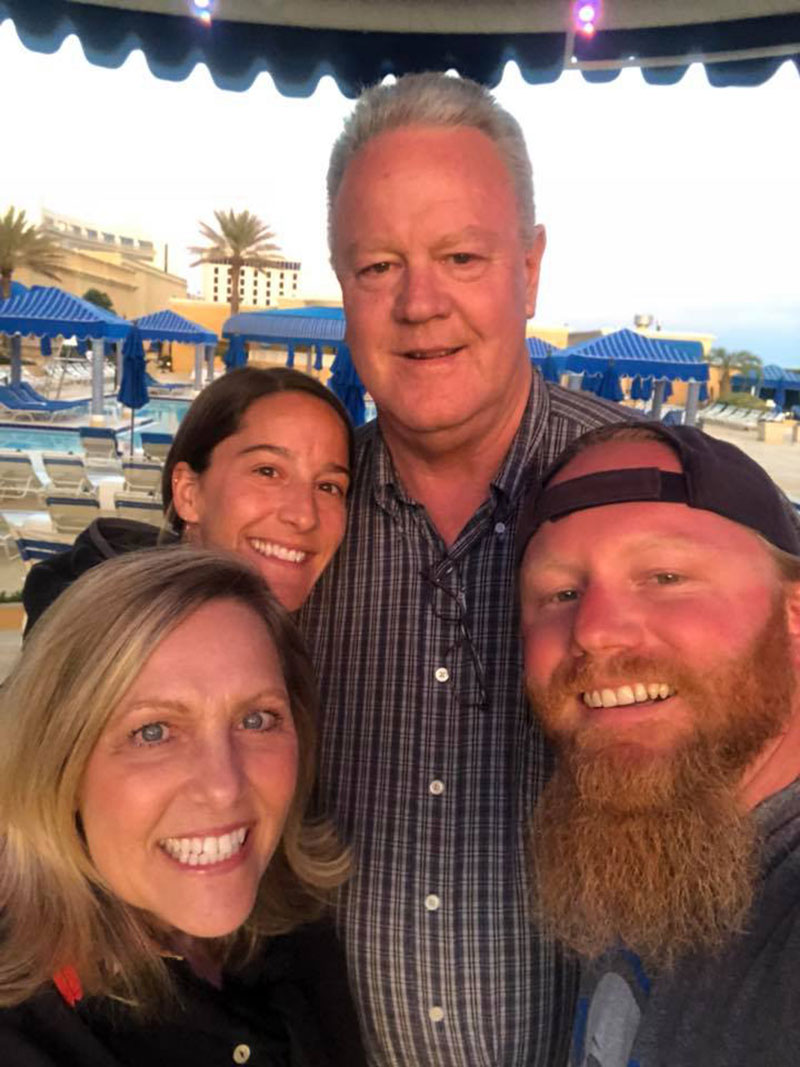
LT Abbitt with her parents and Captain Patrick Vandenabeele during her permanent change of station on her way to meet NOAA Ship Okeanos Explorer to begin her Ops sea tour.Download map (jpg, 252 KB).
To become a NOAA Corps officer, you must have, at minimum, a four-year degree in some form of science, math, or engineering. I consider myself extremely fortunate to have found a career in my field of study that offers so many unique opportunities, allows for development of leadership skills, and especially, affords me the privilege to work alongside a stellar and inspirational group of NOAA Corps Officers and civilian personnel. One benefit of the NOAA Corps is that it’s not a job, but a career. You can move up in the ranks with hard work and time in grade. After only 20 years, NOAA officers can retire with a pension, and we receive the same benefits as the other uniformed services throughout our careers and retirement.
Before you think this job is all glamor and no hard work, I should let you know that NOAA Corps officers work more than 40 hours per week, especially when underway. But it is fulfilling and rewarding work. Many of the assignments available involve getting to participate in the science and assisting the experts. I love that I am able to support the NOAA mission of science, service, and stewardship.
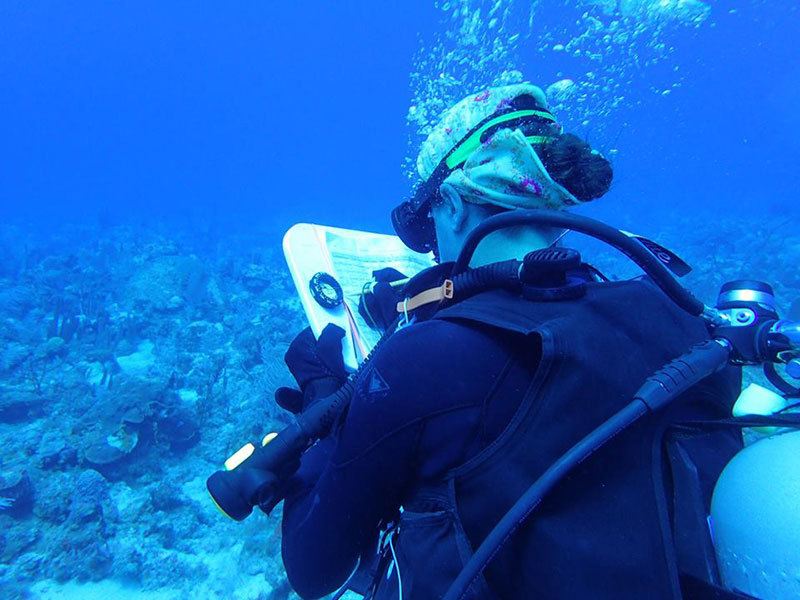
LT Abbitt recording data during a monitoring event at the Diego grounding site in the Dry Tortugas. Image courtesy of Kelsey Jeffers, LT/NOAA Corps. Download larger version (jpg, 345 KB).
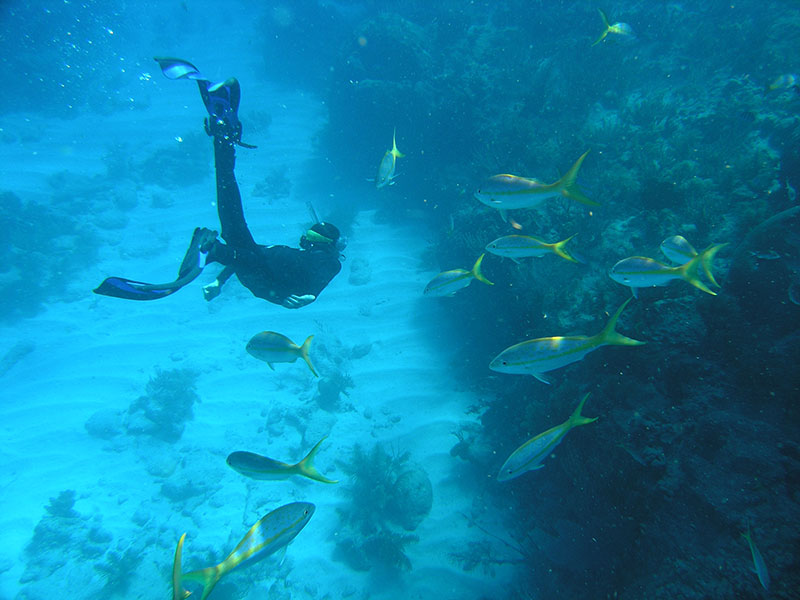
LT Abbitt free diving to 20 feet to check out some fish and coral at Looe Key Sanctuary Preservation Area. Image courtesy of Captain Adam Brynes, NOAA. Download map (jpg, 2.1 MB).
Throughout my time in NOAA, I have had many opportunities to take part in personal development training and participate as a supporting scientist in various roles. I have earned a Global Maritime Distress and Safety System Equipment Operator license; became a NOAA working diver; assisted on a coral restoration project; conducted numerous seagrass and coral damage assessments from boat groundings; supported tracking coral bleaching events; participated in Fast Rescue Boat and Dynamic Positioning training; and augmented aboard NOAA Ships Thomas Jefferson, Ferdinand Hassler, Oscar Dyson, and Nancy Foster, just to name a few!
Each of the NOAA Corps assignments have benefited the public in many ways. For example, aboard Rainier, the surveys I’ve managed directly benefit the mariners that traverse Alaskan waters. Most of the Alaskan nautical charts still have lead-line soundings and a lot of white space. With multibeam sonar, we are able to acquire full-bottom coverage in uncharted waters to fill in the charts with accurate soundings for safe navigation. Additionally, while I was on the science team at FKNMS, I helped rebuild a coral reef that was damaged by a rogue buoy. Not only are coral reefs important habitat for fish and invertebrates, but divers and snorkelers enjoy visiting these beautiful formations, which directly benefits the economy in the Keys. The coolest part was how the fish immediately moved into the “new neighborhood.”
Along the way, I have adopted one of my mentor’s leadership philosophies. Captain Richard Brennan, Commanding Officer aboard Rainier during my first shipboard assignment, taught me to live by the “Ship, Shipmate, Self” philosophy. First, take care of the ship; it is our home for years at a time. It’s imperative to learn the ship inside and out, keep spaces clean, and know how to handle emergencies. Take care of your shipmates; they are your family and source of emotional support, love, security, and protection, and in turn they will take care of you. While at sea, and in every aspect of what we do, we are a team, and we need to build each other up! Keeping morale high is the key to a happy ship.
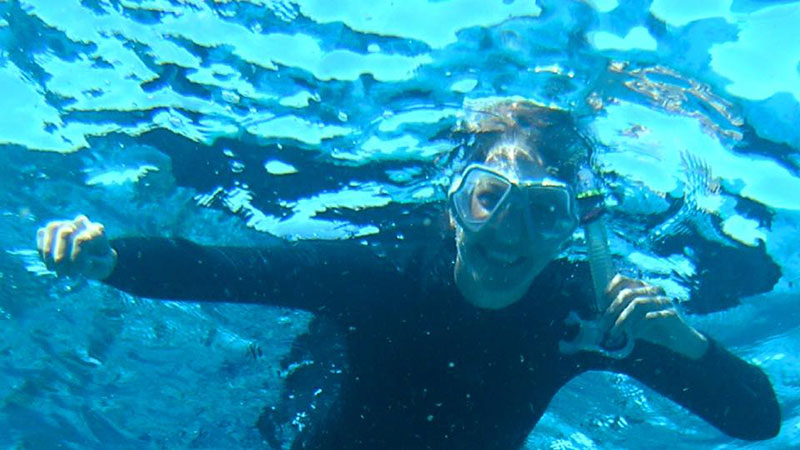
LT Abbitt posing for a picture while snorkeling in Key West. Just look at that crystal clear water! Image courtesy of Captain Adam Brynes, NOAA. Download larger version (jpg, 302 KB).
I believe a work/life balance is important. My hobbies include outdoor activities such as diving, kayaking, paddle boarding, and swimming. Some of the other things I enjoy are playing guitar and doing arts and crafts like crocheting and macramé. I also love watching movies and one of my guilty pleasures is watching Project Runway.
While my job is a lot of work and time away from my loved ones, I wouldn’t change anything about my journey. I feel like I’m where I’m meant to be, and that all of my previous assignments have set me up to succeed in my current billet aboard NOAA Ship Okeanos Explorer. I have enjoyed the variety of what I’ve been able to do in the past six years, and that I get to learn and participate in new and cool things! I look forward to settling into this assignment and in two years taking the experiences with me.